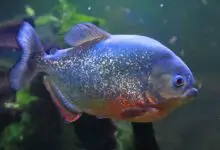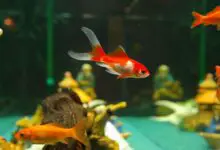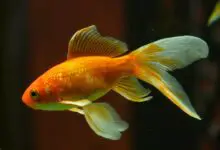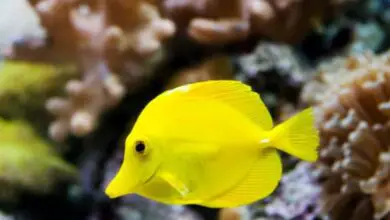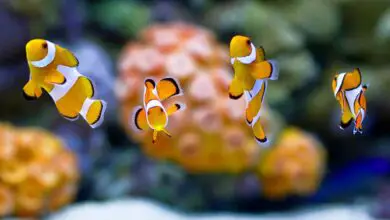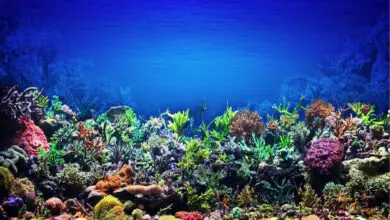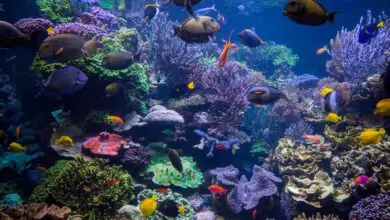5-Step Filtration Guide for Healthy Tanks

Aquarium filtration is vital for clear, healthy water. Proper systems remove waste, circulate water and establish populations of beneficial bacteria. With the right equipment and media, your tank can achieve that pristine, sparkling look.
This guide covers key filtration methods for freshwater aquariums. Learn how mechanical, biological, chemical and supplementary filters work together. Follow these steps to grow thriving aquatic communities.
Step 1: Mechanical Filtration
Mechanical filters trap and remove solid particles before they break down. They are the first line of defense for clearing cloudy water.
Mechanical media captures debris like uneaten food, plant matter and fish waste. Materials like filter floss, sponges and foam pads screen out particles through direct contact. The media becomes encrusted with material over time.
Regular maintenance is needed to prevent clogging. Follow these tips:
- Use a pre-filter – a foam or mesh screen placed over the intake to prevent big chunks entering the filter
- Change floss often – disposable media like polyfiber floss or quilt batting needs weekly replacement
- Swish/rinse sponges – reusable sponges and pads can be squeezed out in old tank water
- Don’t let foam panels get too grungy – rinse gently when water flow is reduced
Frequent cleaning restores full mechanical filtration capacity. Solids that escape can decompose, creating cloudy water.
Step 2: Biological Filtration with Media
Biological filtration is the secret to crystal clear water. In this process, beneficial bacteria convert fish waste into less harmful compounds.
The nitrogen cycle is at the heart of biological filtration:
Ammonia from waste is converted by nitrifying bacteria into nitrite. Different bacteria then transform the nitrite into nitrate.
This cycle relies on establishing thick colonies of helpful bacteria. They grow on surfaces like gravel, decor and filter media.
Some top biological media choices:
- Ceramic rings or balls – porous clay media with rationed spaces for bacteria
- Sintered glass – glass particles fused into pebble-like shapes to maximize surface area
- Plastic bio-blocks, balls or shapes – textured plastic designed for bacterial adhesion
- Sponges – natural and synthetic aquarium sponges give bacteria room to thrive
The more growing room for bacteria, the better. Mixing different shapes and materials takes advantage of their unique benefits.
Step 3: Optimizing Oxygenation
Nitrifying bacteria need oxygen to filter waste efficiently. Proper water circulation and surface agitation are key.
Water pumps on filters should turn over the tank volume at least 5-10 times per hour. This prevents stagnant zones where waste collects.
Protein skimmers in saltwater setups produce air bubbles. This churns the surface, infusing water with oxygen.
Powerheads directed at the surface provide current and rippling to improve gas exchange.
Air stones connected to air pumps generate a constant rush of bubbles. The added surface movement releases more oxygen for bacteria.
More oxygen allows bigger bacterial populations. This expands the biofilter capacity for crystal clear water.
Step 4: Chemical Filtration
Chemical media supplements biological filtration by absorbing dissolved organic compounds. Carbon and specialty resins remove substances that cause discoloration.
Activated carbon is a porous media with massive surface area. It efficiently adsorbs a wide range of organic molecules and dyes. This clears up any yellowish tint from the water.
Carbon also reduces odors and removes some medications after treatments. Replenish it monthly for best performance.
Zeolite resins help with ammonia and other nitrogenous waste. The porous minerals exchange ions to sequester toxins before bacteria process them. Maintain zeolite by cleaning or replacing when saturated.
Chemical filtration polishes out the remaining haze once mechanical and biological steps remove the bulk of waste. This leaves water crystal clear.
Step 5: Supplementary Polishing
As final filtration steps, polyfiber floss and UV sterilization put on the finishing touches.
Polyfiber floss pads give water a final mechanical polishing. The fine loose fibers grab microscopic debris that avoids other filters. Use floss in various locations:
- Over chamber intakes as a pre-filter
- Layered on top of other media
- In loose mesh bags set in the tank or sump
- Wrapped on the intake tube itself
Change polyfiber floss at least weekly since it clogs quickly. Tip: alternate use between white and blue floss. The blue tint makes it easy to see when it’s loaded with gunk!
UV sterilizers employ ultraviolet light to eradicate free-floating algae and bacteria. Green water caused by algal blooms can be cleared up overnight. Use UV clarifiers sparingly since they also kill beneficial bacteria.
Floss traps stray particles while UV controls populations of microorganisms. This one-two punch perfects water clarity.
Monitoring and Maintenance
Once all five filtration steps are established, a routine of monitoring and maintenance keeps things humming:
- Test water parameters 1-2 times per week. Watch for rising ammonia, nitrite or nitrate.
- Clean mechanical media weekly to monthly as needed. Rinse reusable sponges and replace disposable floss.
- Supplement chemical media monthly by replacing a portion of carbon, zeolite and other resins.
- Trim and replant fast growing plants before they shed too much debris.
- Check flow rates on powerheads and pumps. Clean impellers and intakes if flow is reduced.
- Backwash canister filters on a regular schedule to flush trapped gunk. Clean bio-media gently in tank water rather than tap water.
- Feed sparingly and remove uneaten food to limit nutrient buildup.
- Test filter media by swishing in a bucket of tank water. Murkiness means it’s time to clean or replace that media.
- Do larger water changes if any parameters rise above ideal ranges. This resets the system.
Proper aquarium filtration takes some work. But the payoff is a thriving aquatic community in a pristine, crystal clear environment.
Cloudy to Clear: A Case Study
Let’s see these concepts in action with a real world example. Say we set up a brand new 55 gallon aquarium. We added some gravel, decorations and plastic plants. An air-driven sponge filter provides aeration and surface agitation.
After filling the tank and treating the water with dechlorinator, it initially looks nice and clear. But within a few days, the water starts getting cloudy. By week two, it’s downright murky.
What went wrong? With no filtration, organic waste started building up. Fish food, plant matter and fish waste contaminated the water. The gravel and decor provided minimal surface area for bacteria to colonize.
To clear things up, we first added some foam block media on top of the sponge filter. This filters out particles through mechanical means. We also placed mesh pre-filters over the airline tubing.
Next, we installed a canister filter with bio-media like ceramic rings. This increased oxygenation while giving bacteria room to multiply. The nitrogen cycle soon kicked into gear, evidenced by rising nitrate.
Finally, we used activated carbon bags in the filter along with polyfiber floss in the intake strainer. These polishing steps helped clarify the last of the haze. Within two weeks, the water transformed from cloudy back to crystal clear!
Clear Water is Within Reach
Filtration might seem complicated at first. But by setting up the right equipment and media for your aquarium size, the path to clarity becomes easy.
Review these key steps:
- Mechanical – screens debris
- Biological – bacteria transform waste
- Oxygenation – supports nitrification
- Chemical – polishes dissolved organics
- Supplementary – final polishing
Monitoring parameters and regular maintenance keep everything functioning properly. Be patient during the initial cycling period. Soon your efforts will be rewarded with a pristine aquatic environment.

